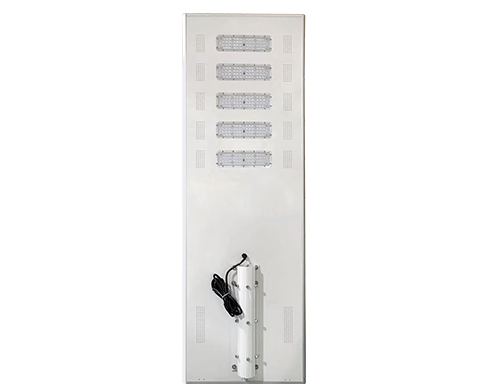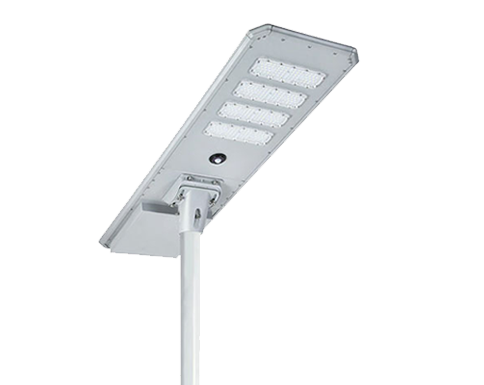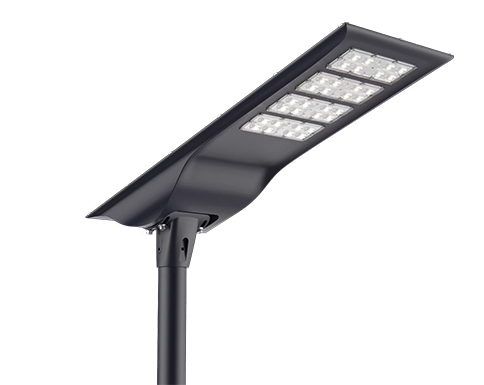Post time: 2022-06-28 17:29:35
LED solar street lights are a great way to provide lighting to a street, roadway or highway without trenching in traditional grid power. As a result, solar LED street lights can lower installation costs, reduce the need for tons of wiring, and reduce the maintenance and project costs over the system's life. And since they are independent of the grid, you don't have to worry about problems down the line affecting every light, such as blackouts or breaks in the underground lines.
A reputable solar lighting manufacturer completes many steps to ensure proper illumination is provided while providing the correct solar power assembly for the operation of the fixtures. Solar lighting manufacturers work with lighting engineers and designers to ensure light levels are met for specific applications. They also look at other sets of information, such as solar insolation, to make sure the lights are appropriately sized for the project. Let's look at these steps and other factors used for designing solar street lighting projects. By making sure best practices are followed, solar street light systems can be a significant investment, paying for themselves quickly and providing an excellent ROI for years to come.
The components that make up a commercial solar street light are similar to other commercial solar lights. Each light consists of a solar power array, battery backup, DC light fixture, controller, fixture bracket, and a pole. Everything exists on one pole with the power located at the top of the pole facing south and the light fixture below, typically on a few feet below the solar, and mounted to face the direction required to provide the light in the correct area.
The solar power assembly is comprised of rigid solar panels, a metal framework, and some bracketry for mounting on the pole. The bracket should attach to the framework properly and stand up to high winds, snowfall, and other weather conditions that may occur.
The solar should be sized up correctly to ensure plenty of charge is provided, even in the worst-case scenario. Even on cloudy days, there is some solar charge that will occur. Making sure that the solar can provide enough energy to recharge the batteries will ensure that the system will operate night after night without fail.
The solar battery backup needs to be adequate to safeguard the system has more than one or two nights of energy supply. This is because there are more than one or two days of bad weather during some times of the year. So instead, a minimum of five nights backup is used by most commercial manufacturers. This storage ensures that there is always plenty of backup power for times of inclement weather. This also allows the battery life to last upwards of five to seven years, making maintenance cycles to be reduced, lowering maintenance costs over the life of the system.
The battery backup can be comprised of a GEL cell battery, an AGM battery, and in some cases, even a lithium-ion battery. Lithium is still very expensive, costing upwards of three to four times a GEL battery cost, and only provides around 2 to 3 years more of a lifespan. This type of battery is just not cost-effective yet; however, as battery technology improves and the demand increases, the costs should start to reduce in the upcoming years, making them a more feasible option. And not skimping on the backup will allow Lithium to provide as good or better service as their GEL counterparts.
A solar street light fixtures are a particular fixture that operates off DC power. Most manufacturers have their line of fixtures and do not work with fixtures outside their main line. This is because extensive testing has been completed, and warranties exist for all components.
A solar fixture is also more energy-efficient than its AC counterparts. This efficiency is because the LEDs operate off the DC power provided by the solar by default, and no AC power adapter is required. This efficiency lowers the power requirement for the same amount of light because you aren't wasting power by converting it from one type of energy source to another. This also reduces the heat produced by the fixture.
The controller acts as a gateway for the solar lighting system. It tells the batteries when they should be taking on the charge provided by the panels. It then will tell the batteries to operate the fixture when the panels stop producing power. The control makes sure that the batteries are not overcharged during the day and drained beyond a specified amount at night. All this control keeps the system operating at peak performance and increases the system's lifespan.
Several control options are available for commercial solar street light projects; however, dusk to dawn is still the most popular because of the old way of thinking about lighting with grid power. Since grid power is always there, why not have the lights be on all night. Many municipalities are starting to catch on to this and are implementing codes to reduce the grid consumption by having the lights decrease in intensity or turn off altogether in some areas.
With off-grid solar street lights, dusk to dawn would require the largest power assembly, and unless you have activity all night, there isn't a reason to have the lights on all night long at full intensity. Instead, dimming is a great way to reduce the solar requirement or increase the high-intensity wattage and provide more light when active.
Another great option is using split time operation. This operation allows the lights to come on at dusk year-round and then shut off after a set period, say after a facility closes. So, if the facility closes at 8 PM, the lights will shut off at 10 PM to ensure no more activity would require light. If the facility opens again at 6 AM, the lights will come on at 5 AM to provide plenty of light for early people. The off-time then requires no solar power and reduces the need for larger systems or allows for brighter lights when active.
Each of these different operation profiles provides a way to control the lights that work for a specific application. For example, in some cases, having the lights on all night will be required, while others are not. If shift changes are the only time when the lights need to be on during the night, a motion sensor can also be added. Motion sensors allow the lights to come on or back up to full intensity during times of activity, then turn back off or reduce once the movement has died back down.
As discussed earlier in this post, lithium is becoming popular. Still, people are skimping on the backup because these types of batteries can be fully drained without causing a loss in lifespan. This cheapens the system and reduces the lifespan and reliability of the LED solar street lighting system. This reduction of storage is especially serious in high-security areas or where the safety and security of the people in the area are crucial. If using lithium, having a good backup is still vital to the system's operation.
GEL cell batteries should only have a discharge of 20% per day to have a good lifespan. These are a more economical way to provide storage for the solar lighting system and can handle extreme temperatures, unlike their lithium counterparts. GEL batteries operate from -40°F to 122°F (-40°C to 50°C) and are typically stored inside vented battery boxes. These battery boxes are installed behind the solar, keeping them shaded and cooler.
Additional storage is typically calculated in cold climates due to the depth of discharge changes with GEL batteries. The optimum temperature is anything over 68°F and reduces as temperatures reduce. At -4°, the capacity is reduced in half; however, this is the temperature inside the battery cabinet, not just the outside temperature. Understanding that in colder climates, additional days of storage allow for the capacity to stay within the 20% depth of discharge per day or less and ensures reliability of the system for inclement weather.
There are many occasions where solar lighting is implemented during the design phase or as an afterthought to a dark location. This is fine because all poles and bases are new. However, standard light poles used with solar must have larger bases and more substantial foundations due to the weight and EPA of the solar power assembly.
n some cases, the LED solar street lighting systems are being implemented because of breaks in the traditional electric lines or to become greener and receive LEED points at a site. Many companies would like to reuse existing poles and foundations; however, this is not recommended. Liabilities can be had for companies that opt for reusing these items as they can be too weak to withstand the additional weight, causing the poles to fall over.
Instead, consulting with a local PE about pole foundations is vital to ensuring there are no liabilities to installing the solar street lighting systems. The bases should also be developed to be above grade in many installations to keep the poles safe from being hit directly by a vehicle in passing. Instead of causing the vibration from being struck, the concrete can absorb some of the force generated by the strike, keeping the pole and system safe from harm.
The need for breakaway base poles along a roadway is also common. This allows the pole to break at the base when struck by a vehicle, lessening the impact to the car and reducing the possibility and the seriousness of injuries to the passengers of a vehicle.
Solar Lighting for Rural Intersections How Much Do All in One Solar Street Light Cost?



Please fill out the form below to start chatting with the next available agent.
Start Chat